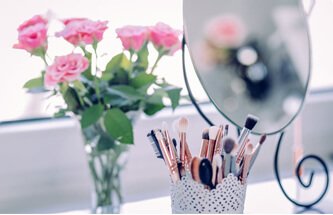Treating Sleep Apnea with CPAP

Do you have a snoring problem? According to research from the American Sleep Association, roughly 22 million Americans suffer from obstructive sleep apnea (OSA). Yet, 80 percent of individuals remain undiagnosed and assume that their snoring isn’t dangerous. However, the reality is that undiagnosed and untreated OSA can trigger several life-threatening health conditions—including diabetes, depression, fibromyalgia, osteoporosis, heart disease, stroke, metabolic disease, not to mention a fatal accident.
How can a CPAP machine improve my OSA?
CPAP therapy is considered almost 100 percent successful for treating OSA because the large majority of patients report total relief of symptoms—including daytime fatigue, loud snoring, dry mouth and throat, headache, and gasping, choking, and breathing cessation that disrupts sleep. In fact, the majority of patients report an immediate improvement in mental focus and physical energy due to wearing a CPAP machine.
Most diagnosed and severe OSA patients use Continuous Positive Airway Pressure (or CPAP) therapy to treat their condition. CPAP therapy is typically a nasal mask worn over the face during sleep. A CPAP mask aims to keep the airways dilated and unrestricted during sleep using a pump, which forces positive flow into the nasal passages.
Even though CPAP masks can significantly reduce OSA symptoms, between 30- and 50-percent of patients report discomfort from wearing CPAP masks during sleep. In some cases, OSA patients complain of ill fitting masks causing headache, abdominal bloat, nasal congestion, and tenderness around the eyes and turn to alternative treatment options to treat their sleep apnea.
Alternative treatments to CPAP for OSA
Even if your CPAP mask is intolerable, leaving your sleep apnea untreated can be very detrimental to your health. Luckily, if you find wearing a CPAP mask unbearable, there are alternatives to CPAP therapy for OSA:
- Oral dental devices
Your doctor may prescribe a dental device to treat low to moderate sleep apnea if you won’t wear a CPAP mask. Mandibular advancement devices (or MADs) can be worn during sleep, like a mouthguard, to force the lower jaw down and push the tongue forward, keeping the airway open. An additional over the counter oral option for sleep apnea patients is a tongue-retaining mouthpiece, which sits on the tip of the tongue and lips to adjust the position and keep the airway open. If you opt for a mouthpiece, be sure to get professionally fitted by your dentist. - Weight loss
In addition to a CPAP machine or other oral device, your doctor may recommend weight loss to reduce your OSA symptoms. Keep in mind that while excess weight can impede breathing during sleep, the structure of the upper airway can also trigger sleep apnea and snoring. - APAP and biPAP therapy
Automatic positive airway pressure (or APAP) therapy and bilevel positive airway pressure (or BiPAP) therapy provide more comfortable alternatives to CPAP for many OSA patients. Both APAP and BiPAP monitor and automatically adjust air pressure and oxygen levels (for BiPAP) during slumber, taking into account things like spikes in breathing and body movement (i.e., rolling over).



